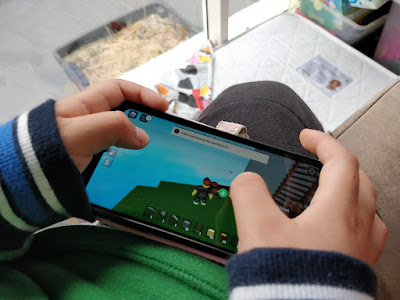Do they? Really? I often wonder what would happen if we did free choice reading throughout school. I’ve lost count of the number of students who have admitted, sometimes sheepishly, that they completed an assignment without reading the assigned text, and I just want to say, me too, kid, me too… (never at uni, though (promise!))!
In 2016, I was involved in an Action Research Project where I reflected upon my effectiveness as an English teacher and engaged in research to better support my students with reading and writing in the classroom. It was in the initial stages of the project that I was introduced to the work of Nancie Atwell who writes on the power of reading workshop and student choice of reading material (2015). On this controversial topic Atwell has penned countless articles, published books, and in 1990 she actually started a school which focused on the explicit teaching of the skills of writing and reading, but the main tenant, underpinning the success of the students who attend the school, is student choice of what to write, and what to read (Center for Teaching and Learning [CTL], n.d., para. 4). The notion of reading for pleasure in the classroom fits so perfectly with the work of Fiske (2010, p. 44) and his discussion of the ‘everyday pleasure’ of popular culture, and Johnson’s (2005, p. 14) reiteration of the inherent value of popular culture.
Reading is a highly personal undertaking and crucial to the development of literacy skills, and yet, so often the preferred method of ‘reading’ at school is students borrowing a teacher-chosen-class-novel, reading a chapter at a time while completing comprehension questions, and then writing a literary essay. And we wonder why students don’t read for pleasure outside of school? It seems as if we pin our desperate hopes – for that single assigned novel, in its shining glory of literary value, textual integrity, and all those gosh darn beautiful metaphors, to suddenly metamorphize our non-reading students into the literati. Wilhelm (2016, p. 31) will attest, that ignoring the link between pleasure and motivation is, and this won’t come as a shock to anyone who has tried to force someone to read something, not very helpful in creating readers.
The common reality in schools is that students’ self-determinacy is very low on the list of priorities and there are many reasons for this, there is a syllabus to teach, accountability measures, assessment for, of, and as learning, literacy targets, etc. etc. but it really is possible and I am with Wilhelm (2016, p. 32) here, imperative, to prioritise pleasure when it comes to reading (I would also argue the same for writing, but that’s an idea for another post!). I changed my perspective on the ‘class novel’ after reading In the Middle (Atwell, 2015) and realised there were other ways to do things, and so, where I could, I made changes and one of those changes was the ‘class novel’. Some students enjoy the practice of laboriously poring over a single text, and I also find it riveting, but when teaching I am always desperately hoping all 30-students, from wildly different backgrounds, with a range of convictions, hopes, and dreams I would likely never comprehend (as someone several decades older than them) will like the book I chose from the book room that was the best of the three options left, and, there were 30-copies, in reasonable condition.
This approach doesn’t inspire much joy, and it doesn’t create a culture of reading and this is where things start to fester – reading brings pleasure, sure, but it also counters social disadvantage, and offers a way to engage in the discourses of the wider world (Wilhelm, 2016, pp. 32-33). There is an idea that if students engage with the canon they will forever be changed by the power of literature and will acknowledge the immense possibilities offered by the written word and they will be readers henceforth, and that anything in the realm of popular culture is a waste (Wilhelm, 2016, p. 33). It is perhaps like eating ice-cream for dinner—delicious but not something any self-respecting grown up would do (Wilhelm, 2016, p. 33). I would argue, though, that secretly we do sometimes want ice-cream for dinner and the abandoning of the rules and structures, to do something that is fun and pleasurable is a delight and important, but even this is a false equivalency as reading a young adult novel isn’t the ‘ice-cream’ of the literature food pyramid, reading is reading, and inherently valuable (Wilhelm, 2016, p. 37). If we stick with the ice-cream metaphor, we’ve missed the point, and we fall into the Arnoldian territory of placing a value judgement on stories that appeal to young people, diverse voices that might not otherwise be heard, an interaction between our students and the expression of our world’s cultures as they stand, today (Takacs, 2014, p. 2). Is it not a highly sophisticated undertaking, and therefore valuable, to read contemporary stories that innately, regardless of intention, offer some insight into society as it is (Wilhelm, 2016, p. 33)?
The act of reading in school could be seen as a nudge to high culture and this is often cemented by the teacher’s choice of text, so many students therefore, rebel against the pressure to read as it is not a pursuit that provides them with value (Fiske, 2010, p. 46). So why do we take an ‘Eat your vegetables!’ stance on reading and glorify the classics when this practice does not foster a love of reading? We understand that reading is wildly beneficial – published texts have been written, edited, and revised but a little bit of that moral panic creeps in and those young adult texts go right out the window (Wilhelm, 2016, p. 33; Johnson, 2005, p. 14). An English writing lesson your student may have experienced or you may have taught is ‘write what you know’ which I take to mean that one’s experiences ground the writing and allow the exploration of the unknown, and I think this is a great way to think about reading – let students ‘read what they know’ and they will learn more and more and their reading world will open before them (Wilhelm, 2016, p. 37).
Here are some fabulous resources on reading:
‘Raising Readers’ by Megan Daley
‘How to Raise a Reader’ by Pamela Paul
Your Kid’s Next Read with Megan Daley and Allison Tait
Center for Teaching and Learning Reading List
Book Suggestions - Year 7/Year 8
Challenge Card (below)
Here are some questions you could ask to generate conversation about YA novels:
- What is the last YA book that you read? What would you rate it out of 10 and who would you recommend it to?
- Who is your favourite YA author?
- What makes a novel suited for a young adult audience?
- What is your favourite type of story to read within the overarching genre of YA?
- Do you think YA is as important as say, classic literature? Why or why not?
- Do you think YA is valued by peers/teachers/parents/society? Why/why not?
- Where do you find out about new YA books?
- Do you prefer one off titles or series?
- Do you have an all-time favourite YA book? What would you rate it out of 10 and who would you recommend it to?
- Where do you access most of your books?
- Are you interested in trying books outside those aimed at a young adult audience?
- Have you ever re-read a YA book?
- Have you or would you ever consider listening to a YA audiobook? Why/why not?
- If you were to write a YA book, what would it be about?
- If you were to adapt your favourite YA book for the screen, which actors would play each of the characters?
Reference List
Atwell, N. (2015). In the Middle. Heinemann.
Center for Teaching and Learning. (n.d.). About CTL. http://c-t-l.org/about-ctl/
Fiske, J. (2010). Understanding Popular Culture. Routledge.
Johnson, S. (2005). Everything Bad Is Good For You: How Today’s Popular Culture Is Actually Making Us Smarter. Riverhead Books.
Takacs, T. (2015). Interrogating Popular Culture: Key Questions. Routledge.
Wilhelm, J. D. (2016). Recognising the power of pleasure: What engaged adolescent readers get from their free-choice reading, and how teachers can leverage this for all. Australian Journal of Language and Literacy, 39(2), pp. 30-41.









